15 years one-stop China custom CNC machining parts factory
 90 |
Published by VMT at Apr 10 2025 | Reading Time:About 6 minutes
90 |
Published by VMT at Apr 10 2025 | Reading Time:About 6 minutes
Introduction: Precision or Practicality – What’s Best for Your Project?
Struggling to decide between CNC machining and manual machining for your next project? You’re not alone. Many product designers, engineers, and manufacturers face the same challenge—balancing precision, cost, flexibility, and speed. Choosing the wrong method can lead to delays, unnecessary expenses, and compromised quality. Whether you're developing a prototype or planning large-scale production, understanding the core differences and advantages of each approach is key. The good news? There's a clear path forward when you understand how each process works and where it excels.
CNC machining is ideal for projects that require high precision, repeatability, and large-volume production. Manual machining, on the other hand, is better suited for low-volume, simple parts, fast turnarounds, and custom adjustments without programming.
To choose the right technology, it’s essential to first understand what CNC and manual machining are, how they work, and how their advantages align with your project’s needs. Let’s start by defining each process and laying the foundation for comparison.
CNC machining is a modern subtractive manufacturing process in which computers control machining tools such as lathes, mills, routers, and grinders. By using pre-programmed software, CNC machines operate autonomously to shape raw materials like metals, plastics, or composites into high-precision components.
CNC machining offers exceptional accuracy, repeatability, and speed—attributes essential for industries like aerospace, automotive, medical, and electronics manufacturing. Its ability to execute complex geometries with minimal human intervention significantly reduces errors and increases production scalability. Thanks to its automation, CNC machining services are particularly cost-effective when producing complex or high-volume CNC machining parts.
At VMT, custom CNC machining is powered by state-of-the-art equipment and skilled technicians, ensuring optimal quality from prototyping to full production.

Manual machining is a traditional manufacturing process where an operator physically controls machines like mills, lathes, and drills. Each movement—be it cutting, rotating, or positioning—is guided by hand, without computer programming. This approach is typically used for simple geometries, low-volume work, or quick modifications.
Unlike CNC machining, manual machining gives the operator full real-time control, allowing for spontaneous adjustments and hands-on craftsmanship. It's often favored in workshops for one-off parts, maintenance jobs, or small custom orders. While manual machining offers flexibility and lower upfront costs, it relies heavily on the machinist’s skill and has limited repeatability.
Manual machining still holds relevance in small-scale settings or when creating parts that don’t require the high tolerances offered by CNC machining factories.
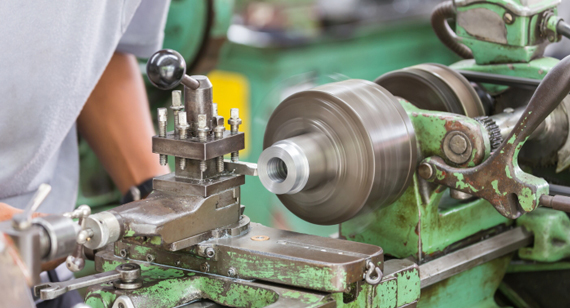
Choosing between CNC machining and manual machining starts with understanding how each method fits into different production scenarios. While both are foundational in the manufacturing industry, their workflows, efficiencies, and capabilities differ significantly. CNC machining leverages automation and software-driven precision, making it ideal for complex and repeatable parts. Manual machining, by contrast, relies on the hands-on skill of a machinist, offering unmatched flexibility for small batches and quick fixes. The right choice depends on your goals—be it mass production, rapid prototyping, or personalized parts.
Key Differences Between CNC Machining and Manual Machining
| Category | CNC Machining | Manual Machining |
| Precision | High; consistent tolerance within microns | Depends on operator skill; less consistent |
| Production Volume | Ideal for mass production | Best for one-off or low-volume parts |
| Labor Requirements | Minimal; one operator can run multiple machines | High; requires full-time supervision and manual control |
| Programming | Requires CAM software and G-code | No programming needed |
| Speed | Faster for complex geometries and repetitive tasks | Slower, especially for intricate features |
| Flexibility | Less flexible for quick changes or custom mods | High flexibility for on-the-fly adjustments |
| Setup Time | Longer initial setup with CAD/CAM involvement | Quick setup for simple jobs |
| Safety | Safer; operator distance and automatic shutoff systems | More hazardous; hands-on operation |
| Tool Wear Tracking | Automatic feedback and compensation in modern machines | Relies on operator observation |
| Cost Efficiency | More cost-effective for long runs | Lower initial investment; ideal for short-term use |
As shown above, CNC machining and manual machining serve distinct purposes within the manufacturing ecosystem. CNC machining is often preferred for its scalability and automation, especially in high-precision industries. Meanwhile, manual machining remains relevant where versatility, speed for low-volume jobs, and lower upfront costs are important. Let’s now dive deeper into the specific pros and cons of each machining technology to further guide your decision.
In modern manufacturing, the decision between CNC machining and manual machining plays a pivotal role in determining production efficiency, cost, and quality. Each method comes with its own set of strengths and weaknesses, and understanding these will help you match the right process to your project’s needs. Whether you're creating CNC machining parts at scale or customizing a one-off prototype, the choice affects precision, productivity, and your bottom line.
Pros of CNC Machining
CNC machining—short for Computer Numerical Control—is a process that automates machine tool operation using coded instructions from software. This technology offers numerous advantages that make it the backbone of industries such as aerospace, automotive, medical, and electronics.

High Accuracy and Consistency:
CNC machines produce highly precise parts with tight tolerances and little deviation, regardless of batch size. This level of uniformity is especially valuable in industries that demand strict quality standards like medical or aerospace.
Increased Production Speed:
Once the design is programmed and tools are set, CNC machines can run continuously with minimal supervision, greatly reducing production time.
Versatility:
CNC machining services can accommodate a wide range of materials—from metals like aluminum, brass, and titanium to plastics and composites. Whether milling, turning, or drilling, CNC machines adapt quickly to different geometries and designs.
Reduced Waste:
By optimizing cutting paths and tool use through CAM (computer-aided manufacturing) software, CNC machines reduce material waste, making production more cost-efficient over time.
Complex Designs:
CNC technology enables intricate geometries, including internal cuts, multi-axis shapes, and 3D contours that are nearly impossible with manual methods.
Lower Labor Costs:
With automation, a single skilled operator can manage multiple machines, significantly reducing labor overhead compared to manual setups.
Disadvantages of CNC Machining
Despite its capabilities, CNC machining isn’t always the most suitable option, especially for small runs, budget-sensitive jobs, or where high complexity isn’t required.
Higher Costs:
Initial investment in CNC equipment and software is substantial. For small shops or limited-volume projects, this capital expense can be prohibitive.
Higher Maintenance Costs:
CNC machines involve more electronics and moving parts than manual machines, leading to increased maintenance complexity and costs over time.
Programming Skills Required:
Operating CNC equipment requires knowledge of CAD/CAM software, G-code, and machining theory. Training is essential, and experienced CNC programmers may be costly to hire or hard to find.
While CNC machining clearly excels in areas of precision, efficiency, and scalability, it’s not always the right fit for every project. Manual machining, with its own set of advantages, may offer more control and cost-efficiency for specific tasks. Let’s now explore the pros and cons of manual machining to better understand where it still holds strong relevance in today’s CNC-driven manufacturing landscape.
What Are the Pros and Cons of Manual Machining?
Manual machining has been the foundation of manufacturing for centuries, and even in today’s CNC-dominated world, it remains a valuable and viable option in many scenarios. While CNC machining offers automation and repeatability, manual machining provides unique advantages, especially for specific types of projects, smaller runs, or when budget constraints are a concern.
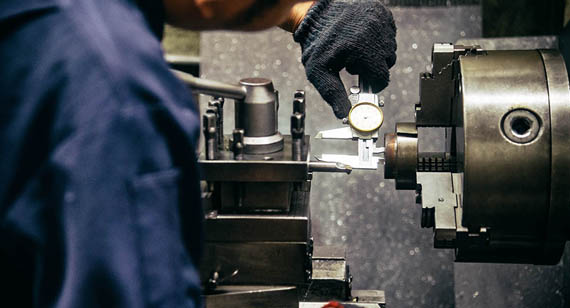
Pros of Manual Machining
Manual machining refers to traditional machining operations controlled directly by a skilled machinist, using machines such as manual lathes, mills, and drills. Despite being labor-intensive, it remains highly practical in certain manufacturing situations.
Disadvantages of Manual Machining
Despite its strengths, manual machining has limitations that make it less suitable for large-scale production or precision-critical parts. The dependence on the human element introduces variables that are difficult to control consistently.
Both CNC and manual machining offer distinct benefits, and the best choice depends on the specific requirements of your project. In the next section, we’ll explore how to decide between the two, taking into account your material, production volume, precision needs, and budget. This comparison will help you make an informed decision that aligns with your manufacturing goals.
In today’s fast-paced product development cycle, prototyping plays a crucial role in validating designs, identifying flaws, and accelerating time-to-market. CNC machines have become a go-to solution for rapid prototyping due to their precision, repeatability, and flexibility. Whether you're developing components for aerospace, medical devices, or consumer products, CNC machining offers a robust, efficient pathway from digital design to physical part. Its ability to work with a wide variety of materials while maintaining tight tolerances makes CNC machining indispensable for modern prototyping.
CNC Milling Machines
CNC milling is one of the most versatile and widely used prototyping technologies. It involves rotary cutters removing material from a workpiece, producing complex geometries, slots, pockets, and surface contours. The key advantage of CNC milling machines in prototyping lies in their:

CNC Lathes
For prototypes requiring cylindrical or rotationally symmetric parts—like shafts, pins, or bushings—CNC lathes offer unmatched accuracy and efficiency. Their advantages for prototyping include:
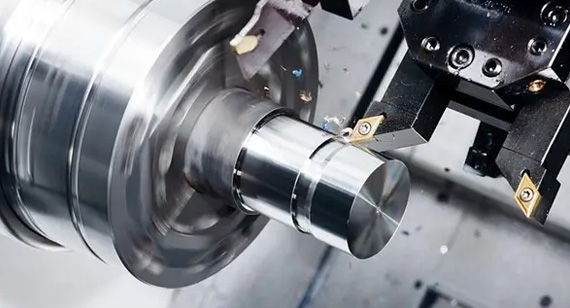
EDM (Electrical Discharge Machining)
CNC EDM is particularly useful for prototyping intricate parts with complex internal geometries or extremely tight tolerances that traditional milling or turning cannot achieve. Its advantages include:
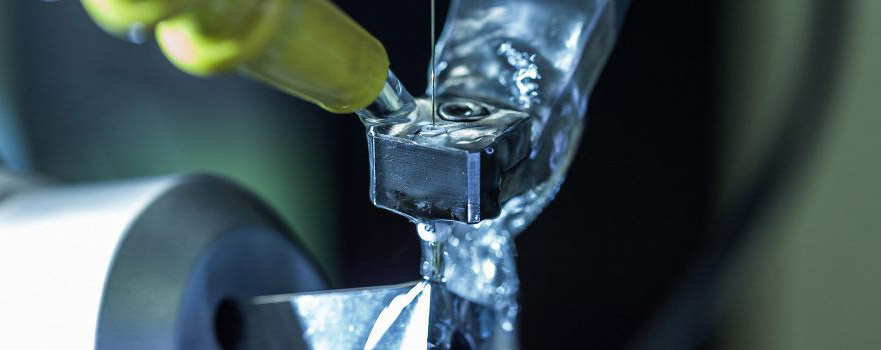
From CNC milling and turning to advanced EDM methods, CNC machining technologies offer prototyping advantages that few alternatives can match. As we move forward, we’ll explore how to choose between CNC and manual machining for your specific needs, including a comparison of production costs, application types, and scalability.
Choosing between CNC machining and manual machining depends on several key factors including project complexity, production volume, timeline, budget, and precision requirements. With each technology offering distinct strengths, making the right choice can significantly impact your product development lifecycle, operational efficiency, and cost-effectiveness. Whether you're a startup prototyping your first product or an established manufacturer scaling up production, understanding where each process excels will help you make a strategic decision.
Applications of CNC Machining
CNC machining is often the preferred solution for projects requiring high levels of precision, repeatability, and speed. It’s ideal for industries and tasks that demand intricate geometries, tight tolerances, or large production volumes.
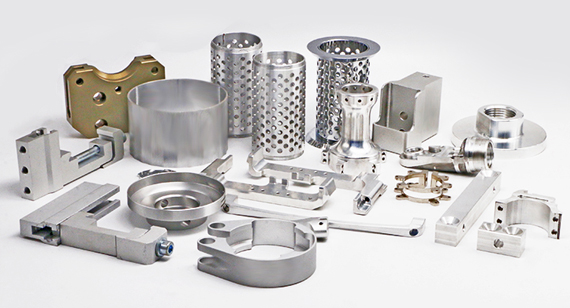
Different Industrial Uses
CNC machining is heavily used in sectors like aerospace, automotive, medical, electronics, and defense. These industries require complex parts made from hard-to-machine materials such as titanium, stainless steel, or high-performance plastics—areas where CNC machining thrives.
Prototyping Tasks
When rapid iterations are needed, CNC machining shines. It allows engineers to make changes directly in CAD models and produce functional prototypes quickly. Because of its accuracy, it also enables design validation and performance testing before moving to mass production.
Rapid Tooling Applications
CNC machining is frequently used to produce jigs, fixtures, and custom molds. It supports fast production of these tooling components while maintaining the strength and precision needed for production-ready tools.
Applications of Manual Machining
Manual machining is more suited for low-volume, cost-sensitive, or non-critical applications. It provides excellent flexibility, especially when working on simpler components that don’t require automation.
Small Projects
For small batch runs, quick fixes, or proof-of-concept pieces, manual machining can be more economical. The absence of a lengthy setup or programming phase makes it quicker for producing one-off parts.
Personal Crafts and Customization
Manual machining is often preferred by artisans, hobbyists, or machinists producing customized parts, tools, or artworks. Its hands-on approach allows for intuitive modifications without the need for CAD modeling or G-code programming.
Repairs and Maintenance
Manual machining is especially effective in repair shops or maintenance facilities. It allows machinists to modify or recreate damaged components without needing full digital documentation, which can be unavailable in legacy systems or older equipment.
Ultimately, choosing between CNC machining and manual machining comes down to your specific application needs. While CNC offers speed, precision, and scalability for industrial and commercial use, manual machining gives flexibility and cost-efficiency for custom, low-volume, or straightforward tasks. Next, we’ll explore the cost breakdowns of each process and what factors influence your final decision.
One of the most frequently asked questions in the world of manufacturing is: Which process costs more—CNC machining or manual machining? Understanding the cost dynamics of both technologies is critical for businesses planning their budgets, evaluating return on investment (ROI), or determining the best production method. While CNC machining often requires a higher upfront investment, it typically delivers superior long-term value due to its speed, precision, and automation. Manual machining, on the other hand, offers lower startup costs but may become more expensive over time in labor and error-related inefficiencies.
Equipment Costs
CNC machines are far more advanced than manual machines in terms of capabilities, and as such, they are also significantly more expensive. A basic CNC mill can start around $30,000 to $50,000, while more advanced 5-axis CNC machining centers can exceed $200,000. In contrast, a manual lathe or mill typically costs between $5,000 and $15,000, depending on size and features.
Despite the steep price difference, CNC machines bring automation, which can drastically reduce labor costs and increase output over time—making the investment worthwhile for high-volume or complex part production.
Lathe Costs
A CNC lathe can range from $20,000 to $100,000+, depending on spindle speed, tooling compatibility, and control systems. Manual lathes, by comparison, are more affordable and can often be sourced used or refurbished at a fraction of the price.
However, the cost per part tends to be lower on a CNC lathe for mass production due to faster cycle times and less manual intervention. Manual lathes remain advantageous for small jobs, maintenance, or quick customizations.
Hourly Costs
Hourly operational costs also vary. CNC machining costs per hour can range from $75 to $200, depending on the machine’s complexity, material, and labor. Manual machining rates are generally lower, typically around $35 to $60 per hour, since they require fewer power and automation resources.
Yet, manual processes often require longer cycle times and are more labor-intensive, leading to reduced overall efficiency—especially for complex or precision-critical jobs.
Lower Overall Costs than Manual Machining (in Mass Production)
While CNC machining may be more expensive upfront, its automation and repeatability significantly reduce the per-unit cost in bulk manufacturing. Once the program is written and setup is complete, the machine can produce thousands of identical parts with minimal operator input.
This makes CNC machining especially cost-effective for custom CNC machining, CNC prototype machining, and large-scale production runs commonly handled by a CNC machining factory.
Lower Scrap Rates and Lower Maintenance Costs
CNC machining benefits from digital accuracy, leading to significantly lower scrap rates and rework costs. Errors that often occur in manual machining—such as inconsistent dimensions or poor surface finishes—are nearly eliminated in CNC due to precision programming and closed-loop feedback systems.
Additionally, CNC machines are built for continuous operation, and while their maintenance costs can be higher in terms of parts and specialized labor, their predictive maintenance features often prevent costly breakdowns, unlike manual machines that wear faster due to operator handling.
Increasing Industrial Demand
Industries such as automotive, aerospace, medical, and electronics increasingly favor CNC machining for its precision, scalability, and integration with digital systems. This growing demand further reduces costs through economies of scale and technological advancement, making CNC machining more accessible than ever for businesses of all sizes.
While manual machining might offer lower initial costs and more flexibility for small-scale or one-off projects, CNC machining delivers long-term cost advantages through automation, reduced waste, and faster turnaround. In the next section, we’ll explore a side-by-side cost comparison and the key factors that influence the final cost of each method.
Here's a clear, easy-to-understand comparison table outlining the cost differences between CNC machining and manual machining, helping you quickly evaluate which option might suit your project best:
CNC Machining vs. Manual Machining – Cost Comparison Table
| Cost Factor |
CNC Machining |
Manual Machining |
| Initial Equipment Cost |
High – $30,000 to $200,000+ | Low – $5,000 to $15,000 |
| Lathe/Mill Cost |
CNC Lathe: $20,000–$100,000+ | Manual Lathe: $3,000–$10,000 |
| Hourly Operational Cost |
$75–$200/hour (machine + labor) | $35–$60/hour (mostly labor-driven) |
| Setup Time |
High (initial programming/setup), but reusable | Low for basic parts; needs reset for each new job |
| Per-Part Cost in Bulk |
Low (automation & repeatability) | High (labor and manual involvement) |
| Labor Requirements |
Lower – 1 operator can monitor multiple machines | Higher – 1 operator per machine |
| Production Speed |
Fast – optimized cycles and minimal downtime | Slow – manually controlled feeds and speeds |
| Scrap/Rework Rates |
Low – precise, consistent, programmable | High – human error more common |
| Maintenance Costs |
Higher – specialized components and service | Lower – simpler components, easier to maintain |
| Programming Requirement |
Yes – CAM software or G-code programming required | No – manually controlled via dials and levers |
| Best For |
High-volume, complex, tight-tolerance production | Small batches, prototyping, or manual customization |
| Cost-Effectiveness Over Time |
Higher ROI in long-term production | Lower ROI unless for very specific low-volume jobs |
This table helps visualize the real trade-offs between custom CNC machining and manual machining, especially when considering CNC machining services or setting up your own CNC machining shop. Next, we’ll walk through the factors that influence these costs further, from labor to scrap management.
When deciding between CNC machining and manual machining, understanding the cost drivers is essential. Although both processes share the same goal — shaping raw materials into finished parts — the expenses involved can vary dramatically depending on several operational and technical factors. Whether you're launching a prototyping task, small-batch production, or high-volume manufacturing, knowing what influences your machining bill will help you make the most cost-effective choice for your project.
Labor Costs
Labor is one of the most significant cost factors in any machining setup. Manual machining is labor-intensive, requiring highly skilled machinists to operate machines, monitor tolerances, and make real-time adjustments. These skilled professionals command higher wages due to their expertise, especially in custom or precision jobs.
In contrast, CNC machining requires far less human intervention once the machine is programmed and set up. A single operator can oversee multiple CNC machines, significantly reducing hourly labor costs. The initial training and programming may be more specialized, but the long-term savings in operator time and headcount often outweigh those costs.
Programming
CNC machining incurs additional upfront costs due to programming requirements. CAM (Computer-Aided Manufacturing) software or G-code must be generated and tested before production can begin. This setup time translates to a longer lead time and extra cost, especially for complex geometries or tight tolerances.
Manual machining doesn’t require programming, making it a faster choice for very simple, one-off parts. However, the absence of digital precision can also lead to higher long-term inconsistency, which may increase hidden costs over time — especially in quality-critical applications.
Scrap Products
Scrap generation is a hidden cost that often tips the scale in favor of CNC machining. Thanks to automation and digital precision, CNC machines have lower error rates and therefore produce fewer defective or off-spec parts. This minimizes wasted material and rework costs.
Manual machining, on the other hand, is more susceptible to human error. The result can be higher rates of scrapped components, especially in complex parts or repeat production. For industries where material cost is high (such as titanium or specialty alloys), this can become a serious expense.
Maintenance Issues
Maintenance for manual machines is typically simpler and cheaper. The mechanics are basic, and repairs can often be done in-house without special tools. However, wear-and-tear issues may arise more frequently due to human handling and older technology.
CNC machines, while more robust in automation, require scheduled maintenance and sometimes proprietary service contracts. Their electronics and automation systems are more complex and expensive to repair, but with proper maintenance, they tend to have longer service lives and better uptime.
Industry Demands
The industry you operate in also plays a key role in determining machining costs. High-demand sectors like aerospace, automotive, and medical devices often require the precision, speed, and traceability that only CNC machining can offer. These industries also push up demand for custom CNC machining services, which may lead to competitive pricing but also higher market expectations.
In contrast, smaller shops or niche industries — like restoration, artistic fabrication, or personal customization — might lean toward manual machining. These applications benefit more from human intuition and adaptability than from automation, often allowing for cost-effective production despite slower speeds.
In summary, choosing between CNC and manual machining isn’t just about upfront costs. It's about understanding where your project fits in terms of labor, programming, waste, maintenance, and market needs. The next section will help you decide which process aligns best with your business goals.
Here is a comparative table of the different factors affecting the cost of CNC machining vs. manual machining:
| Factor |
CNC Machining |
Manual Machining |
| Labor Costs |
Lower per part due to automation; one operator can manage multiple machines. | Higher due to need for constant skilled labor during operations. |
| Programming |
Requires CAM software and skilled programmers; higher upfront setup costs. | No programming required; quick to start simple jobs. |
| Scrap Products |
Low scrap rate due to digital precision and repeatability. | Higher risk of scrap due to human error and inconsistent results. |
| Maintenance |
More expensive and complex due to electronics; usually requires specialist help. | Simpler and cheaper; often manageable in-house. |
| Industry Demand |
Preferred in high-precision industries (aerospace, medical, automotive). | Better suited for repairs, custom jobs, artistic work, and low-volume production. |
| Tool Wear Management |
Monitored and optimized digitally for extended tool life. | Relies on operator judgment; tool life may vary significantly. |
| Setup Time |
Longer setup but faster production. | Short setup but slower production speed. |
| Cost Efficiency |
More cost-effective for medium to high-volume production. | More cost-effective for one-offs or low-volume custom parts. |
This table serves as a quick reference to help determine which process best aligns with your project goals, budget, and production volume. Let’s now explore how to decide which machining method is best for your specific needs.
When it comes to selecting between CNC machining and manual machining, the right choice depends on several key factors: your production volume, part complexity, material types, tolerance requirements, turnaround time, and budget. While both technologies have their place in the manufacturing landscape, they are better suited for different types of projects and goals. Below is a structured breakdown to help you decide which machining method fits your needs best.
1. Part Complexity and Precision Requirements
If your design involves complex geometries, tight tolerances, or multi-axis machining, CNC machining is almost always the superior choice. CNC machines can execute highly intricate paths, ensuring consistency and accuracy across every part in a batch. In contrast, manual machines are best for simpler shapes or less demanding tolerances. If your job involves basic turning, facing, or slotting operations, manual machining may be sufficient.
2. Production Volume
For high-volume or repeat production, CNC machining is more efficient and cost-effective. Once programmed, a CNC machine can run the same part multiple times with minimal variation and reduced labor cost. For low-volume, one-off parts, custom repairs, or prototyping in small batches, manual machining can be quicker and cheaper without the overhead of programming or CAM setup.
3. Lead Time and Flexibility
CNC machining generally involves longer initial setup times due to programming and toolpath simulation. However, it significantly speeds up once production begins. On the other hand, manual machining allows for faster setup for simple parts, which makes it ideal for emergency repairs, last-minute adjustments, or personalized modifications.
4. Material Compatibility
Both CNC and manual machines can handle a wide variety of metals and plastics. However, CNC machining is preferred for harder or more exotic materials (like titanium or nickel alloys) due to its precise control over feed rates, speeds, and coolant application. Manual machining, while flexible, may struggle with materials that require tight tolerance or specific tool geometries.
5. Labor Skill and Availability
Manual machining relies heavily on operator expertise, and outcomes can vary based on skill level. CNC machining reduces dependency on individual craftsmanship by automating the process. If skilled manual machinists are not available, CNC machining ensures repeatable quality and lower error rates.
6. Budget Constraints
While CNC machining typically has higher initial costs due to programming, tooling, and setup, it becomes cost-effective over medium to long production runs. Manual machining is more affordable upfront and is better suited for budget-sensitive, short-run jobs.
7. Post-Machining Integration and Digital Workflow
CNC machining integrates seamlessly with CAD/CAM software, digital inspection, and automated production lines. If your production environment requires digital traceability or cloud-based project management, CNC machining offers much more flexibility and control.
To sum up, if your project demands precision, volume, complexity, and digital integration, CNC machining is the clear winner. But for one-offs, simple parts, or when agility and cost are key, manual machining can still be a smart, viable option. At VMT, we offer both custom CNC machining and manual machining services, providing the flexibility to match your project’s scale, timeline, and complexity.
Let’s continue by looking at the real-world applications of CNC machining in various industries and how VMT supports your success.
CNC machining has revolutionized how precision parts are manufactured across countless industries. Its ability to repeatedly produce high-tolerance components with minimal variation makes it ideal for sectors where quality, speed, and complexity matter most. From high-tech consumer products to mission-critical aerospace parts, CNC machining offers scalable and reliable solutions for modern manufacturing needs. Let’s explore four key industries where CNC machining is widely applied and deeply impactful.
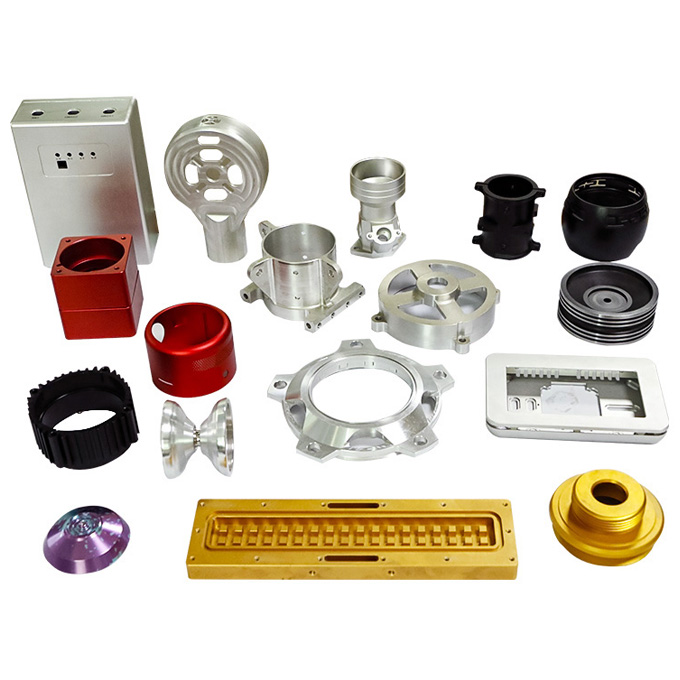
In the fast-paced world of consumer electronics, demand for smaller, sleeker, and more intricate components continues to grow. CNC machining plays a crucial role in producing precision enclosures, brackets, heat sinks, and connectors for smartphones, tablets, laptops, and wearable devices. Materials such as aluminum, magnesium alloys, and engineered plastics are frequently used for their lightweight and thermal conductivity properties.
Custom CNC machining allows for quick prototyping of new electronic designs and efficient production of housing parts with complex geometries or tight tolerances. Moreover, the surface finish achieved through CNC milling or turning helps enhance product aesthetics—a key factor in consumer preference.
CNC machining is vital in automotive production due to its ability to produce high-strength, high-performance components consistently. Common applications include engine blocks, transmission housings, suspension components, brake systems, and gearboxes. Both prototype parts for new vehicle models and production parts for mass-market models benefit from CNC accuracy and durability.
With the growing trend toward electric vehicles (EVs), CNC machining is also instrumental in creating battery enclosures, motor housings, and lightweight structural components. The repeatability of CNC machining ensures that every part meets the exact specifications, which is crucial for vehicle safety and performance.
3. Oil and Gas Industry
The oil and gas industry requires robust and corrosion-resistant components that can withstand extreme environmental conditions. CNC machining produces valve bodies, flanges, pump components, pistons, and downhole tools made from hardened alloys like stainless steel, Inconel, and titanium.
Precision is especially important in this sector due to the high-risk environments in which these parts operate. CNC machining ensures reliable operation in offshore rigs, refineries, and pipelines. Additionally, CNC prototype machining enables rapid design verification for custom drilling tools or valve components tailored to specific extraction conditions.
Medical devices demand ultra-precise components, tight tolerances, and bio-compatible materials—all strengths of CNC machining. Applications range from surgical instruments and orthopedic implants to dental crowns, prosthetic components, and diagnostic equipment housings. Materials like titanium, stainless steel, and high-grade plastics such as PEEK are commonly used in medical CNC machining due to their strength, cleanliness, and ability to be sterilized.
CNC machining services in the medical field often support rapid prototyping, allowing medical manufacturers to bring innovations to market faster while ensuring repeatability in life-critical components. With growing demand for personalized medical solutions, CNC machining continues to be indispensable in the production of custom implants and patient-specific devices.
CNC machining’s role across industries shows its unparalleled versatility. As we move forward, we’ll explore how VMT’s CNC machining services support these sectors with tailored solutions, from prototypes to full-scale production.
Starting your CNC machining project with VMT is not just about manufacturing—it’s about building a long-term partnership grounded in precision, reliability, and customization. Whether you need prototypes, low-volume production, or high-volume CNC machined parts, VMT is fully equipped to turn your ideas into tangible results with exceptional quality and service.
Tailored CNC Machining Services for Every Stage
VMT offers a full spectrum of CNC machining services, including CNC milling, CNC turning, CNC prototype machining, and custom CNC machining. From initial design reviews to final production, our engineers work closely with clients to ensure all specifications are met, and critical tolerances are achieved. With advanced CNC machining factory capabilities and high-precision equipment, VMT is ideal for projects that demand exact repeatability, complex geometries, and tight deadlines.
Efficient Quote-to-Production Workflow
The process begins with a seamless quoting experience—just submit your CAD files and project requirements through our online platform or directly to our engineering team. We review every detail for manufacturability and provide suggestions to improve production efficiency and reduce costs. Once approved, the project moves quickly to production thanks to our optimized workflow, in-house equipment, and experienced machinists.
Prototyping to Mass Production Under One Roof
Whether you're developing a new product or scaling an existing one, VMT can handle every stage. Our CNC prototype machining capabilities are ideal for validating designs, testing function, and refining engineering. When you're ready to scale, we offer high-speed CNC machining with consistent results across hundreds or thousands of parts.
Why Choose VMT?
From the moment you share your design to the final delivery of your parts, VMT ensures clear communication, engineering expertise, and quality you can count on. If you’re ready to bring your concept to life with precision and confidence, VMT is your CNC machining partner—start your project today.
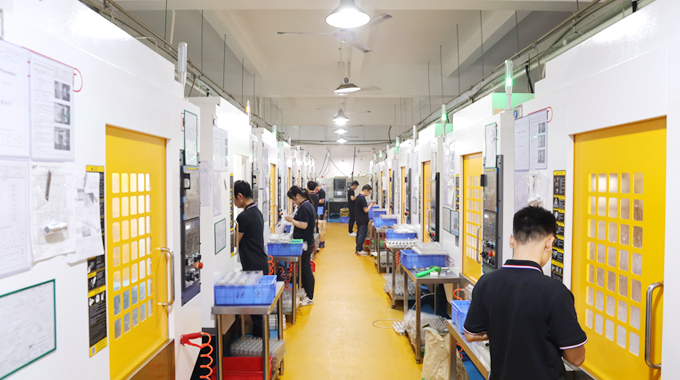
Choosing between CNC machining and manual machining depends largely on your project’s complexity, volume, precision requirements, and budget. CNC machining offers unmatched accuracy, repeatability, and efficiency for complex designs and large-scale production. It's ideal for industries like aerospace, automotive, and medical, where precision and automation are critical. Manual machining, on the other hand, is a cost-effective option for one-off parts, repairs, or small batches, offering quick setup and hands-on flexibility without the need for programming.
While CNC machining may involve higher initial costs and technical know-how, it pays off in consistency, speed, and lower scrap rates. Manual machining remains relevant for prototyping, simple geometries, and situations where human judgment is essential. Ultimately, the right choice depends on factors such as production quantity, material, desired finish, tolerances, and operator expertise.
By understanding the strengths and limitations of both technologies, manufacturers can make informed decisions. Whether you’re looking for custom CNC machining, CNC prototype machining, or evaluating traditional manual methods for smaller tasks, selecting the right machining approach is key to achieving cost-effective, high-quality results. For projects requiring high precision, scalability, and speed, CNC machining services from a trusted provider like VMT offer a competitive edge.
1. Is CNC Machining Safer Than Manual Machining?
Yes. CNC machining is generally safer because the operator has limited direct interaction with moving tools and materials. Most processes are automated, reducing the risk of injury from human error or accidental contact with rotating or cutting components.
2. What are the Advantages of Using CNC Machines Compared to Manual Machines?
CNC machines offer high precision, repeatability, speed, and the ability to produce complex parts with minimal human involvement. They are ideal for large-scale production and significantly reduce material waste, labor costs, and inconsistencies.
3. How Do the Skills of a Manual Machinist Differ from Those of a CNC Machinist?
Manual machinists rely on hands-on skills and machine manipulation, requiring deep knowledge of tooling and machining techniques. CNC machinists focus more on programming (e.g., G-code), CAD/CAM software operation, and process optimization for automated equipment.
4. Can a Manual Machine Perform the Same Tasks as a CNC Machine?
In general, no. Manual machines are limited in precision, repeatability, and complexity. CNC machines can execute intricate 3D geometries, multi-axis cuts, and high-volume runs that are nearly impossible or highly inefficient to perform manually.
5. Which Industries Still Prefer Manual Machining Over CNC Machining?
Tool rooms, repair shops, and educational institutions often rely on manual machining for small projects, quick adjustments, or training purposes. Custom one-off parts and prototypes can also benefit from manual methods due to their simplicity and speed.
6. Is CNC Machining Suitable for a Variety of Materials and Applications?
Absolutely. CNC machining is highly versatile and supports a wide range of materials, including aluminum, steel, titanium, brass, plastics, and composites. It is used across aerospace, automotive, medical, consumer electronics, and many other industries.
7. Is CNC More Precise Than Manual Machining?
Yes. CNC machining consistently achieves tighter tolerances, smoother finishes, and exact part replication, making it superior in precision over manual machining, especially in complex or high-volume parts.
8. How Do We Distinguish Between Manual Lathes and CNC Lathes?
Manual lathes are controlled directly by the machinist, while CNC lathes operate based on programmed instructions. CNC lathes support automatic tool changes, multi-axis machining, and repeat operations, whereas manual lathes require constant human control.
9. How Do CNC Machines Differ from Manual Machines and How Are Programming Controlled?
CNC machines rely on computer-aided programs (G-code) to control tool movement, speed, and path, enabling automation and precision. Manual machines are guided solely by the operator’s skill. CNC programming is done via CAD/CAM software and uploaded to the machine.
10. What Are the Advantages of Manual Machines?
Manual machines are more cost-effective for low-volume or simple projects, offer hands-on control, have lower initial investment, require no programming, and are easier to maintain. They're ideal for quick setups and modifications.
11. What Is the Difference Between CNC Turning and Manual Turning?
CNC turning is automated and allows high-speed production of symmetrical parts with consistent accuracy. Manual turning is done by hand and suited for low-volume or less complex tasks, but it lacks the precision and efficiency of CNC.
12. Is CNC Machining Suitable for Mass Production?
Yes. CNC machining is ideal for mass production due to its repeatability, automation, and precision. Once programmed, it can produce thousands of identical parts with minimal variation, making it highly efficient for industrial-scale operations.
